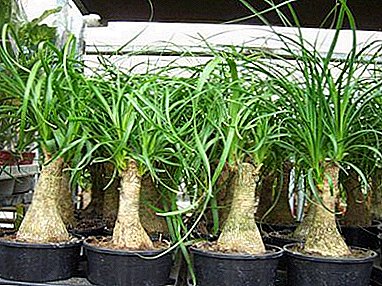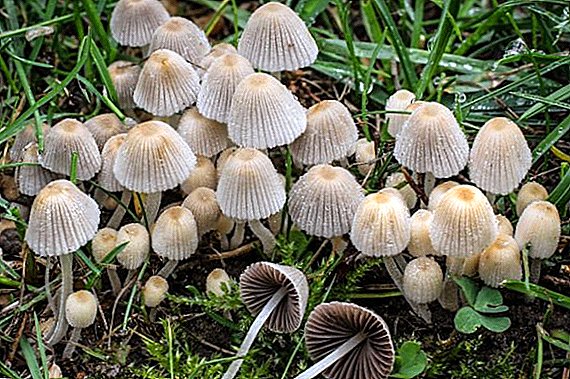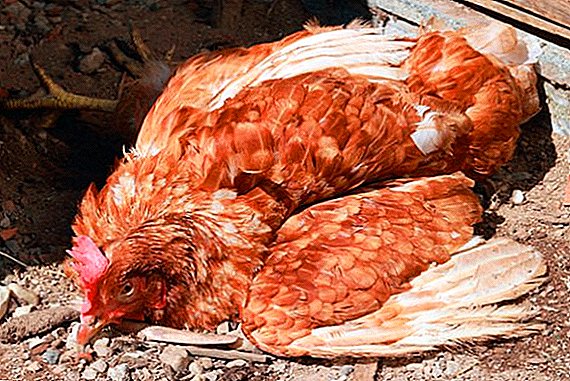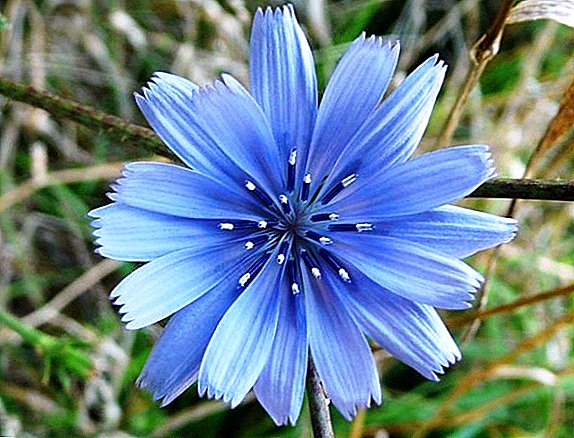 Raspberry does not need special care and quickly gives fruit.
Raspberry does not need special care and quickly gives fruit.
Therefore, every summer resident can plant this plant on their land. In addition, its berries make delicious jam and tinctures.
But when and where to plant, how to care - we will find out further.
When to plant raspberries
Depending on the region, raspberry bushes can be planted in autumn and spring. Autumn is suitable for the southern regions, because it has kept positive temperatures for a long time. And spring is the right time for areas with early and cold winters, then the bush will have time to take root, settle down and not freeze. 
In the spring
Planting raspberries at this time of year is better from mid-April to May. It is advisable to have time before the buds begin to open. However, it all depends on air temperature.
In the south at this time it may be already quite hot, and therefore in the spring it is better not to plant raspberries here, because the rhizomes simply do not have time to settle down, and the bush will start budding. The plant does not have enough moisture and nutrients, and it will die.
The northern regions are ideal for spring planting - the humidity is maintained and lasts for as long as the plant needs for rooting.
Important! In the spring, the seedlings will take root for a long time anyway, as the plant has already started to give leaves. Therefore, they begin landing as soon as the earth thaws, if frost is not expected to return.
 The bush must be pruned, namely, to remove the shoots to the buds, until they begin to actively grow and take nutrients for themselves. The shoots themselves should not be thick, it is better to take shrubs with a pair of grown and matured stems.
The bush must be pruned, namely, to remove the shoots to the buds, until they begin to actively grow and take nutrients for themselves. The shoots themselves should not be thick, it is better to take shrubs with a pair of grown and matured stems.In the autumn
Already in September you can land. It is better to start a couple of weeks before the presumably freezing of the soil, but not later than half of October.
You will be interested to learn about the agrotechnology of cultivating such varieties of raspberry as "Beglyanka", "Taganka", "Maroseyka", "Vera", "Bryansk Divo", "Monomakh's Hat", "Giant of Moscow", "Patricia", "Bell" , "Tourmaline", "Senator", "Glen Ampl", "Beauty of Russia".
It will take one year old processes of basal buds. They have grown up and taken root in the ground. They need to be carefully removed from the ground, cut too long processes of the root system and remove the damaged ones.
To determine the readiness of the bush for planting can be as follows: the leaves begin to fall off, the bush stops growing, and the buds grow closer to the root of the seedling. 
Where to plant on the site
From the selection of the landing site depends on the speed of engraftment and yield. The lighted place is best suited, but not empty. Around there should be trees or other bushes that will save raspberries from strong winds. Choose an area that is usually covered with snow in winter.
This is necessary to ensure that the root system can withstand even in severe frosts from -30 ° C. A layer of snow naturally warms the shrub.
Familiarize yourself with the basic rules for planting raspberries, how to do it correctly in spring and autumn.
At the same time, make sure that the groundwater does not stagnate at this place - although the plant loves moist soil, it will quickly rot from moisture overload.
Around your crimson planting should not be solanaceous - potatoes, tomatoes, strawberries. This rule applies to the predecessors of the plant. It is better if there were other fruit bushes or vegetables before the raspberry on the chosen place, but after they fertilized the soil, or it naturally rested and got important elements. 
Important! At one place raspberries can give a good harvest for no more than 12 years, after which it must be relocated.
It is necessary to take into account such rules of a successful landing:
- between the bushes, leave at least half a meter distance, and place the beds 2 meters apart;
- so that the soil does not dry, pour peat and sawdust around the bush, this will help retain moisture;
- wash the raspberry roots with clean water and after a couple of hours with water with fertilizers, so you will help her to settle in place and do not harm the roots;
- do not use chemical treatment of the bushes - the berries ripen quickly and absorb harmful substances;
- under each bush after planting you need 5 liters of water, but do not pour it right away - it is better to do this throughout the day.
If all the rules are followed, then by the second year of life the berries will appear. The main thing - remember that after harvesting the branches are cut. 
How to choose healthy seedlings when buying
Rules for choosing quality seedlings:
- Do not take the plant, the roots of which are stored in the package, this leads to decay and minimal survival;
- the smaller the seedling, the greater the chance that it will survive;
- take a shrub with 2-3 shoots;
- roots must be wet, without damage and rotted areas;
- the stem must be solid, solid, free from damage and not too long;
- avoid shopping with hands - instead of a pure variety, you can sell a wild game or just a sick plant;
- Do not be afraid to buy in supermarkets, most often they directly cooperate with garden nurseries.
Learn which varieties are best planted in the country, about the peculiarities of growing yellow raspberries, black raspberries, Tibetan raspberries, remontant raspberries.
Site preparation
Before planting it is necessary to clean the area from weeds. The most dangerous ones are wheat grass, bindweed, sow thistle and other perennials with a developed rhizome.  After that, you can proceed to fertilize the soil. Humus in the ground will help the raspberry not only to settle down, but also to give a good harvest. Therefore, before planting the area is fertilized with manure. Mineral fertilizers are also introduced, after which the land is plowed to a depth of 30 cm.
After that, you can proceed to fertilize the soil. Humus in the ground will help the raspberry not only to settle down, but also to give a good harvest. Therefore, before planting the area is fertilized with manure. Mineral fertilizers are also introduced, after which the land is plowed to a depth of 30 cm.
In wet ground bury the bush to the root collar. Then the plant is cut to the level of the soil.
Landing methods
There are two ways of placing raspberries on the plot - in the pits and trenches. The second method is considered more effective for obtaining a good harvest. At the same time, it is more difficult to prepare for it.
Yamny
A couple of weeks before planting shrubs, you need to dig holes about 40 cm wide and 30 cm deep. Do not forget to leave between the pits to the meter of space. It is necessary to keep separate the upper and lower layers of excavated soil. If the ground is fertilized according to all the rules, then we cover the rhizomes only with the upper left layer. 
Did you know? The most ancient raspberry shrubs found in Crete, they grew in the III century BC. er
If the land has not been fertilized before, then you can pour the compost directly into the pit. It will take 10 kg of humus, half a kilo of wood ash, potassium sulfate and superphosphate 50 and 100 g, respectively.
Trench method
We dig out trenches with a depth of 40 cm and a width of 60 cm in a cleared area of weeds. They may be as long as you wish. But keep in mind that the distance between seedlings should be at least 40 cm.
We fill the bottom with compost or manure mixed with the ground by not less than 10 cm, after which we fill the same amount of soil from above. This layer of soil will protect the roots of raspberry from the rotting nutrient layer.
Trench planting raspberry: video
We plant previously prepared seedlings, moisten the roots, straighten them and cover them with earth. You can check whether you planted correctly: pull the seedling slowly, if it does not come out easily, then everything is correct.
How to care for raspberries
Raspberries on the right landing site will not require special care. You just have to give her some attention from time to time.
Watering
Regularly check the soil, if it becomes dry, then water the bush. On particularly hot days and drought, pour out 40 liters of water per square meter and a couple of times a week - up to 30 liters. This amount of water does not drown raspberries, but rather reaches the root system and humus.
Watering is necessary before flowering, during the ripening of the berries and immediately after harvesting. 
Soil care
The raspberry root system needs air. Therefore, we need to weed and loosen the bushes after each watering. This should be done no deeper than 10 cm near the branches themselves, and up to 15 cm between the beds.
To moisture quickly did not go away, make mulching. It will help reduce the number of watering tripled. Topsoil covered with sawdust or peat.
Tying up
Shoots may sink to the ground due to an excessive amount of berries. This can lead to breaking of the branches and loss of harvest. Therefore, near each bush you can put a wooden peg, which is easy to tie up the branches.
You can also install posts every 2 m and tie them up with wire. Between the threads of the wire need to carefully hold the shoots. 
Top dressing
In order not to fill the raspberries with chemicals, collect ashes - it will be able to fertilize the soil perfectly. If you have prepared the land before planting, then the pledged humus will last for at least 5 years.
Pruning
Raspberries give too many replacement shoots - they will not yield crops, but they will take away the nutrients. The normal number of shoots per bush is up to 7. Young shoots grow back closer to May, then the total number on a bush grows to 10-20. The following spring, the driest and damaged cut off.
Learn how to properly prune raspberries.
The tips of the shoots do not bear fruit, so they are cut by 10 cm. You can increase the growth of the side branches, if you pinch them at a height of about a meter. They do it in the summer, and in the fall the plant will be able to prepare for the cold.
If you notice that the branches begin to fall off, the leaves dry up - immediately get rid of them. Most likely, this is a disease. 
Preparing for the winter
If the territory is too windy and open, then it is better to cover the bushes with a tarpaulin. But from time to time they need to give breathing. The raspberries planted in spring are ready to meet the cold. In the autumn, it is better not to delay the landing, otherwise the rhizome will freeze.
In severe frost rhizome protects from freezing snow. If it is not there, then pre-piled peat will not allow the plant to disappear.
Did you know? Raspberry flowers look down, so their insects can pollinate even on rainy days.
So, the planting of this plant requires the gardener to follow certain rules. Only the right place and quality care will help to get a big harvest. Also remember that ripe berries are not stored for more than two days, so use the harvest as soon as possible.
Feedback from network users













